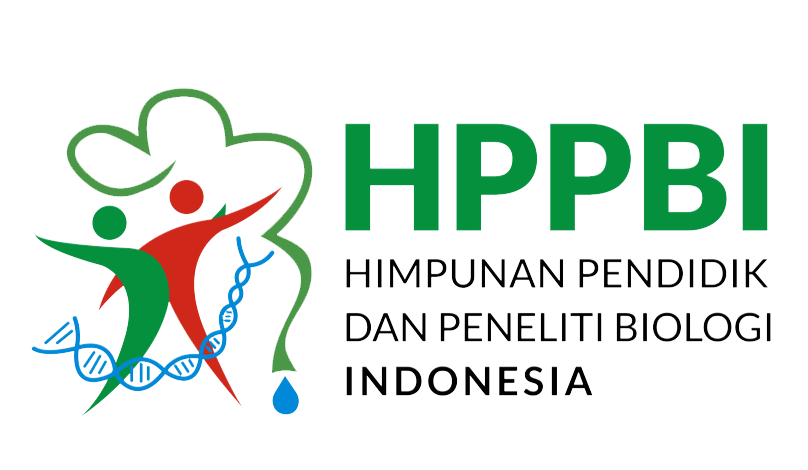PERTUMBUHAN RUMPUT LAUT (Eucheuma cottonii) PADA KEDALAMAN AIR LAUT YANG BERBEDA DI DUSUN KOTANIA DESA ETI KECAMATAN SERAM BARAT KABUPATEN SERAM BAGIAN BARAT
Abstract
Background: cottonii Eucheuma Seaweed is macro algae that live in the sea, generally in the bottom waters and attached to the substrate or other objects and also life floating on the sea surface. Part - part seaweed generally consists of Holdfast is a basic part of the seaweed that serves to attach to the substrate and thalus which forms the growth of seaweed that resembles branching. Seaweed growth is highly dependent on factors oceanography (physics, chemistry, and dynamics of movement or sea water), seaweed take nutrients from the surroundings by diffusion and osmosis through thallus wall.
Methods: Based on the results of research conducted in June 2011, and then do an in-depth study related to planting seaweed Eucheuma cottonii with different depths - the difference of up to 30 cm, 40 cm, and 50 cm in the village kotania coastal waters.
Results: The results showed that at a depth of 30 cm of growth is very good compared to the depth of 40 cm and 50 cm less growth in both .This can be caused due to the presence of light intensity on the surface of the sea water in comparison with the deeper parts.
Conclusion: The depth is good for the growth of seaweed is 30 cm below sea level with an average wet weight for 35 days (5 weeks) is 160 grams
Downloads
Authors who publish with BIOPENDIX: Jurnal Biologi, Pendidikan dan Terapan agree to the following terms:
- Authors retain copyright and grant the journal right of first publication with the work simultaneously licensed under Creative Commons Atribution-ShareAlike 4.0 International License (CC BY-SA 4.0) that allows others to share the work with an acknowledgment of the work's authorship and initial publication in this journal.
- Authors are able to enter into separate, additional contractual arrangements for the non-exclusive distribution of the journal's published version of the work (e.g., post it to an institutional repository or publish it in a book), with an acknowledgment of its initial publication in this journal.
- Authors are permitted and encouraged to post their work online (e.g., in institutional repositories or on their website) prior to and during the submission process, as it can lead to productive exchanges, as well as earlier and greater citation of published work.

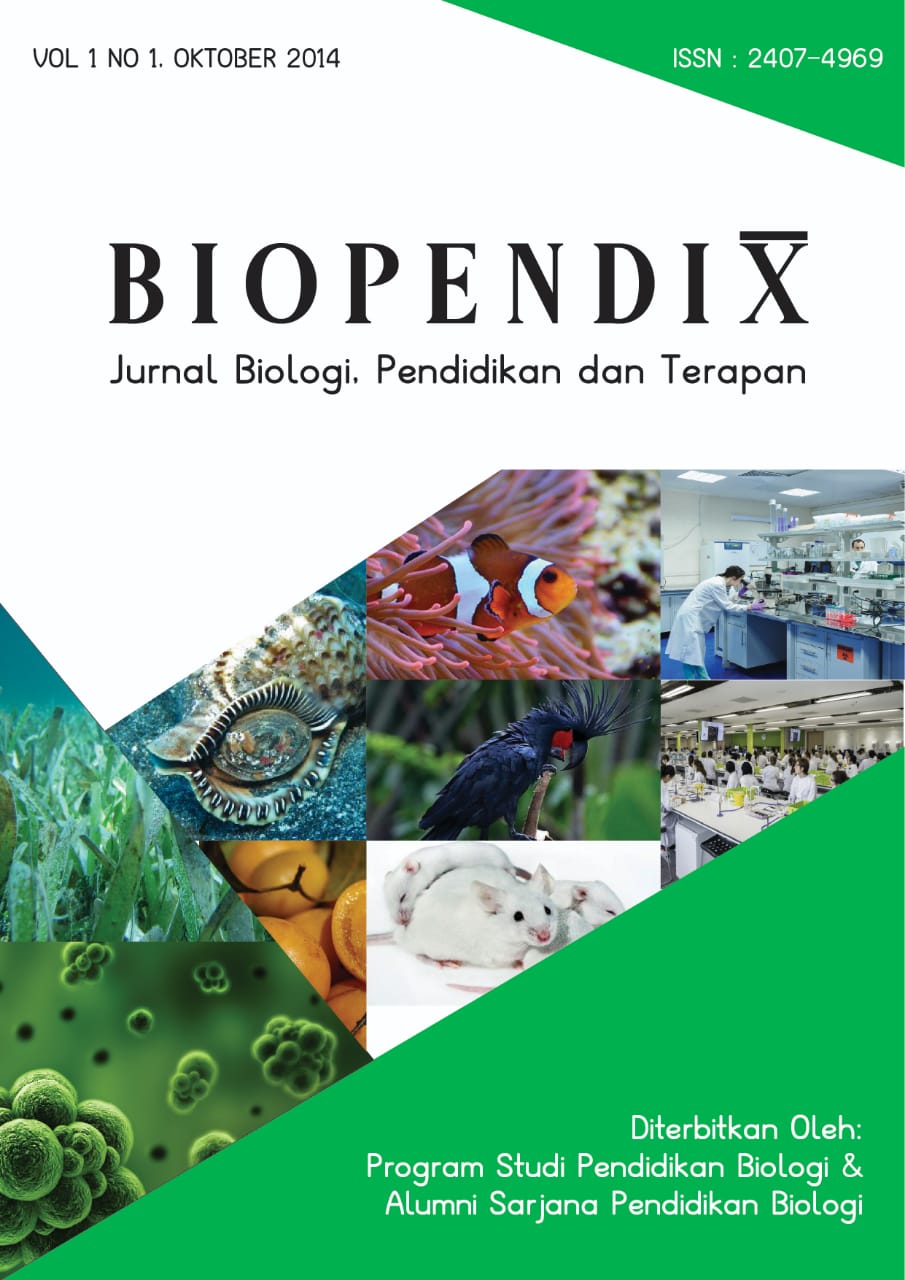
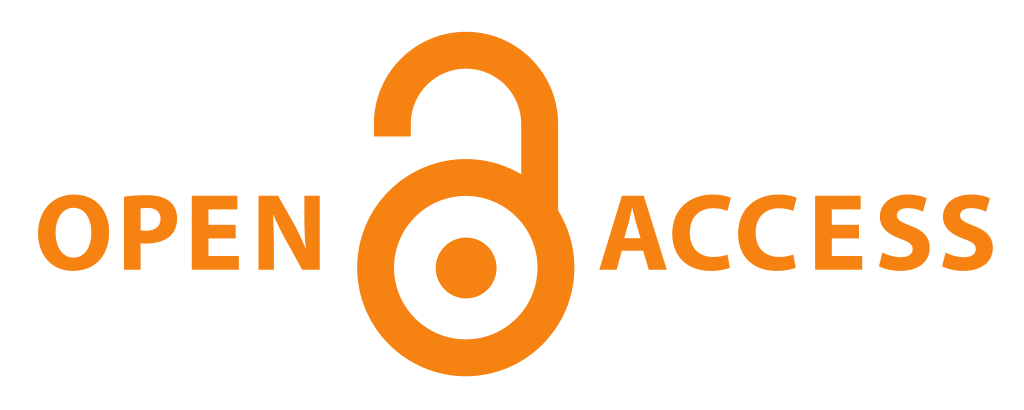
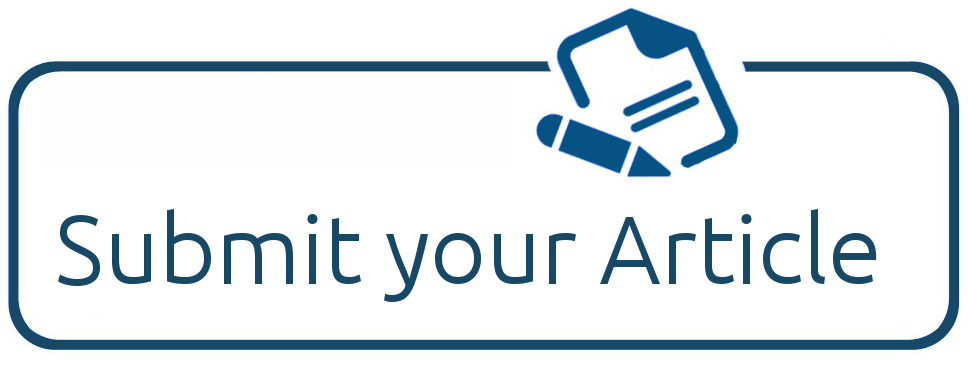
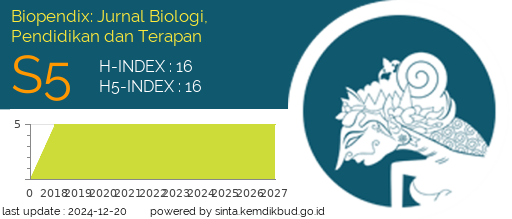
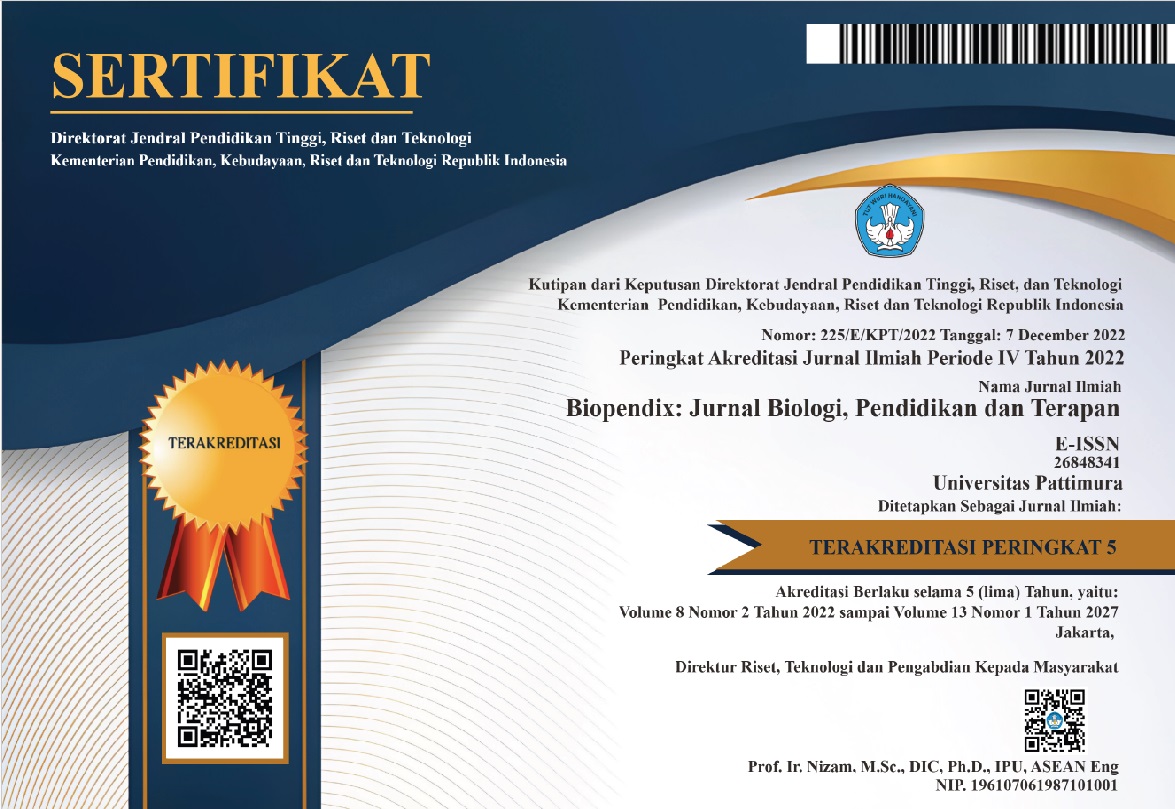 2
2





